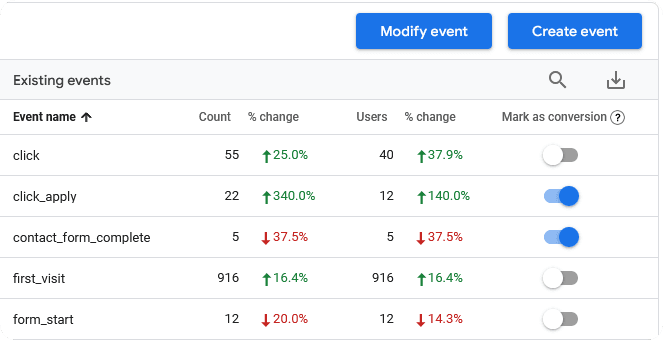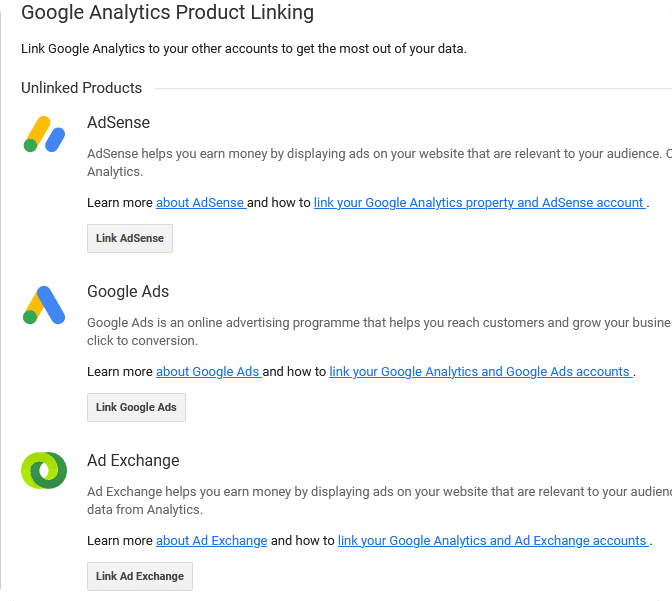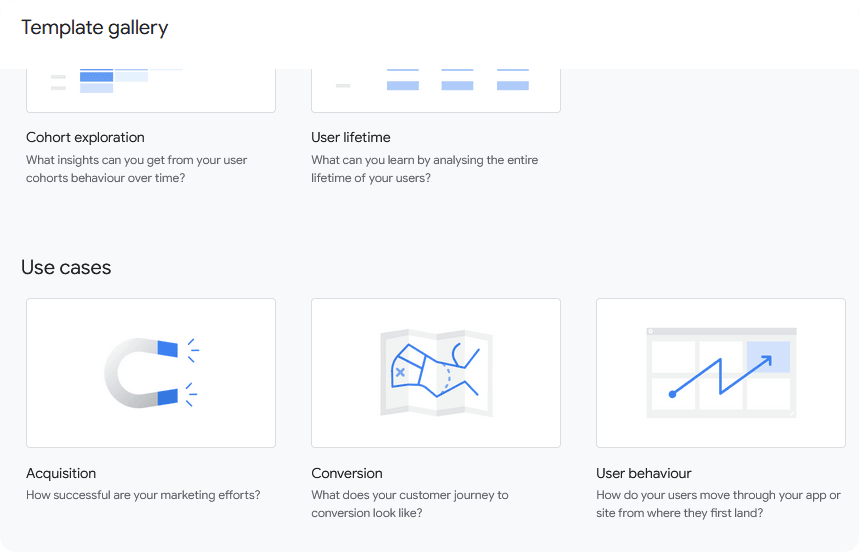Google Analytics (GA) was a widely used web analytics tool that helped a vast majority of businesses to keep track and analyse their website traffic, as well as other key metrics. However, Google has released a Google Analytics 4 (GA4), which is a new and improved version of GA’s previous version – Universal Analytics (UA).
While Universal Analytics has been the default option for new GA users since October 2020, Google phased out UA in July 2023 to replace it with GA4. This means that Google no longer offers support and updates for UA, so businesses that continue to use it may have difficulty troubleshooting any issues that may come up.
In this article, we discuss and explain a few key differences between UA and GA4, which digital marketers must remain aware of.
Collecting and processing data
One main difference between UA and GA4 is how they collect and process data. For instance, UA generally relied on more traditional client-side tracking code that was installed on a website, while GA4 implements new measurement protocols instead.
These protocols combine both server-side and client-side tracking. This allows GA4 to collect more in-depth data, such as the location and device type being used by users. It is also a more effective way to track user behaviour across different platforms. These platforms include the web, mobile, and app devices.
Range of features and capabilities
Another big difference between the two analytics tools is the range of features and abilities that they offer.
GA4 features a machine learning-powered feature called Enhanced Measurement that can automatically identify any key user interactions and events happening on a website. These interactions can include clicks, scrolls, as well as form submissions. By seeing what kinds of interactions are on a website, it can help businesses gain a better understanding of how users interact with their websites, and allow them to make informed decisions to better improve the user interface and experience. Furthermore, GA4 includes powerful insights into user behaviour across different devices and platforms, as well as strong data privacy and security features.
On the other hand, UA only offered a basic set of features. While it allowed businesses to track their website traffic, user behaviour and other key metrics, it did not include advanced features such as platform tracking and enhancement measurement. More importantly, UA did not offer the same level of security and data privacy as GA4.
Goal conversions
In UA, marketers could report and analyse each traffic source's conversion rate for each goal. For instance, the Goal URLs reports showed the URLs where the most goals were completed. With the code featured on every page of a business's website, they used it to collect certain data on buttons, social media profiles, links and more.

In GA4, conversions are completely different. This is because goals as conversions are no longer URL-based, since in event-based analytics, it is difficult to locate the actual drop-offs without sessions. As conversions are now based solely on events, other tools, such as Google Tag Manager, will need to be used instead.

Cookies and consent
UA mainly got its data through cookie-based tracking. This is where the website sends cookies to a user’s web browser, allowing the website to monitor the user’s web activity during that user’s sessions on the particular site.
Currently, regulations on data privacy and security are becoming stricter. For instance, if a company has to manage personal data from users based in the EU, they must comply with the EU’s General Data Protection Regulation (GDPR). The GDPR necessitates website owners to disclose certain details such as the source, type, and purpose of data collection, and with whom the data is shared. So, under the GDPR, businesses must get explicit consent from EU residents to collect and process their personal information. If the user refuses, then their information cannot be collected. Depending on how many users choose to opt-out, this could cause a decrease in data regarding website traffic, which could be detrimental to businesses.
Fortunately, with GA4, the platform mainly tracks data based on specific events instead of simply relying on cookies to track every pageview. That said, it still does rely on cookies when they are needed for tracking purposes. However, if users do not grant consent, data is still captured, but just without identifiers. This means that GA4 can still use the data generated to prepare reports based on machine learning. So, marketers are now operating on data that is modelled, instead of the ‘real’ behaviour of website users.
How they are designed
When it comes to how the platforms are designed, there are significant differences as well.
For starters, GA4 is designed to be a more ‘native’ analytics tool. It can be integrated directly into Google’s other products and services, such as Firebase and Google Ads. As such, it makes it easier for businesses to use GA4 in combination with other services and tools that they may also be using. It further allows for seamless analysis and data integration.
UA, though, was designed to be a standalone tool. This means it was not integrated with other Google products and services. Thus, businesses had to manually integrate it with other tools and platforms to optimise UA’s effectiveness.

Different data models and structure
One of the most significant differences between GA4 and UA is their measurement and data model.
UA was more traditional and used a measurement model primarily based on sessions and pageviews. A session was defined as a group of user interactions with a particular website, which took place over a period of time. A session could include events, e-Commerce transactions and multiple pageviews. That being said, the data model is less flexible and customisable and does not offer the same level of reporting capabilities and data visualisation compared to GA4.
In contrast, GA4 uses a data model that is based on predefined events and parameters. The intent here is that any interaction can be included as an event. This means that all UA hit types will translate into events in GA4. This can be slightly confusing for digital marketers, as in all previous versions of GA, including UA, their events have a category and their own hit type. This is not so for GA4 – there is no category, but every hit, which is an event, contains parameters instead.
GA4 also allows for more customisable and flexible data analysis for marketers, and further features more powerful data visualisation and reporting capabilities – for instance, creating dashboards and reports that are tailored to the specific needs of the business.

Bottom line
As GA moved away from a session-based data model to an event-based data model, there have been several changes between the two analytics tools. Marketers now have no choice but to befriend GA4 or switch to another analytics solution.
Since GA4 is currently still in development, even more changes are bound to occur.
If you have any questions, make sure to contact MediaGroup Worldwide. Our experienced digital marketing specialists are excited to assist you and analyse your website traffic and your campaign’s performance. Contact us now at: https://mediagroupww.com/en/contact/.
Head of Measurement
Lucia heads up the Measurement department at MediaGroup. Previously, Lucia worked at our agency as a Display Specialist, managing various programmatic and display campaigns for our clients, always showing a great passion for data and analytical approaches. She also sharpened her analytical skills while working as a Senior Marketing Analyst at a technology corporation. Lucia holds an Industrial Engineering degree from the Argentine University of Enterprise.
Popular categories:
The Memorable Marketing by MediaGroup podcast series interviews leading senior marketers worldwide on all things marketing, campaigns, strategy, building awareness and everything that makes a brand successful.
Join the conversation by leaving your thoughts and questions, and we will be happy to chat with you. If you want to discuss your business marketing strategies in more detail or join our podcast as a guest, please reach out to us at: [email protected]
Latest Insights
Article
Digital out-of-home advertising: the way to build brand awareness in the real world
Out-of-home advertising (OOH) has existed as an advertising channel for many years. They usually took the form of ads on the side of buildings, and they continue to be one of the most impactful ways to reach a wide audience in a short amount of time.
Written by Aitor Gonzalez Manterola
Quarterly marketing insights in our newsletter
We are committed to helping you get the best results in your digital marketing game. Our experts will give you actionable insights and knowledge, based on our experience, to tackle the biggest marketing challenges. Unsubscribe at any time.
Mediagroup Worldwide processes the above information in order to subscribe you to the newsletter. Privacy Policy
